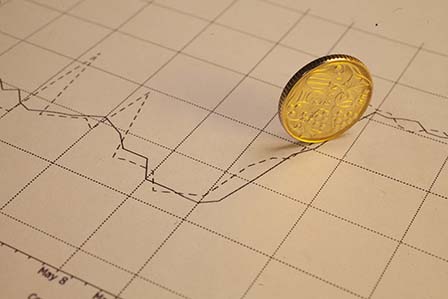Bine ați venit pe pagină oficială a Băncii Naționale a Moldovei!
×
Ai vederea bună și dorești să închizi acest instrument?
Ai vederea bună și dorești să închizi acest instrument?
Anca Dragu, guvernator
Vladimir Munteanu, prim-viceguvernator
A doua zi de miercuri a lunii: 14:00-16:00.
Telefon: +373 22 822 606.
Tatiana Ivanicichina, viceguvernator
A treia zi de miercuri a lunii: 14:00-16:00.
Telefon: +373 22 822 607.
Constantin Șchendra, viceguvernator
A patra zi de miercuri a lunii: 14:00-16:00.
Telefon: +373 22 822 607.
Bine ați venit pe pagină oficială a Băncii Naționale a Moldovei!
Dacă doriţi să expediaţi un mesaj (întrebare sau sugestie) în regim on-line accesați compartimentul "Feedback" din meniul principal din partea de sus a site-ului.
Cele mai populare rapoarte statistice:

Banca Naţională şi membrii organelor de conducere ale acesteia sunt independenţi în exercitarea atribuţiilor stabilite de lege şi nu pot solicita şi nici accepta instrucţiuni de la autorităţile publice sau de la orice altă autoritate.

Banca Naţională informează publicul despre evoluția inflației anuale, strategia de politică monetară,rezultatele analizei macroeconomice, evoluţiei pieţei financiare şi informaţia statistică, inclusiv privind masa monetară, acordarea creditelor, balanţa de plăţi şi situaţia pieţei valutare.

Pentru asigurarea şi menţinerea stabilităţii preţurilor pe termen mediu, Banca Naţională a Moldovei menţine inflaţia (măsurată prin indicele preţurilor de consum) la nivelul de 5.0 la sută anual cu o posibilă abatere de ± 1.5 puncte procentuale, fiind considerat nivelul optim pentru creşterea şi dezvoltarea economică a Republicii Moldova pe termen mediu.

Stabilitatea financiară se realizează prin consolidarea rezilienței sistemului financiar, limitarea efectului de contagiune și diminuarea acumulării de riscuri sistemice, contribuind, astfel, la sustenabilitatea sectorului financiar și creșterea economică.

Banca Naţională a Moldovei, are dreptul exclusiv de a emite pe teritoriul Republicii Moldova bancnote şi monede metalice ca mijloc de plată. BNM pune în circulaţie bancnote şi monede metalice, prin intermediul sistemului bancar.

Banca Naţională este unica instituţie care efectuează licenţierea, supravegherea şi reglementarea activităţii instituţiilor financiare.

Banca Națională supraveghează sistemul de plăţi în Republica Moldova şi promovează funcţionarea stabilă şi eficientă a sistemului automatizat de plăţi interbancare.

Banca Naţională este o persoană juridică publică autonomă şi este responsabilă faţă de Parlament.

BNM publică statistici privind masa monetară, sectorul bancar, balanța de plăți, situația pieței valutare, etc. pentru a asigura transparența în procesul de elaborare și adoptare a deciziilor BNM, a asigura continuitatea în comunicare și predictibilitatea BNM pe piață, pentru sporirea credibilității BNM în calitate de bancă centrală dar și pe piața financiar-bancară din Republica Moldova.
Site-ul www.bnm.md prioritizează securitatea datelor și utilizează cookie-urile pentru îmbunătățirea experienței de navigare și confortul utilizatorului. Acceptul folosirii cookie sporește viteza de lucru a paginii și garantează funcționarea normală a modulelor de prezentare a informațiilor. Refuzul folosirii cookie poate încetini încărcarea site-ului și îngreuna navigarea lină între pagini. Mai multe detalii în Politica de utilizare a cookie-urilor.
Inflation Report no.2, May 2013
The potential gross domestic product (GDP) is defined as the level of output that does not generate inflationary pressures. When actual GDP is above potential GDP, aggregate demand is generating inflationary pressures and the aggregate prices will therefore grow.
Representing the extent of excess demand in the economy, the potential GDP is relevant for deciding upon the monetary policy stance. Over the forecast horizon, the monetary policy anchors the inflation towards the target set through aggregate demand management.
The specific features of the potential GDP concept differ depending on the time horizon considered. In the long run, the potential GDP is conditioned largely by the structural characteristics of the economy. Potential GDP growth rate is mainly determined by fundamental factors such as the productivity capacity, the technological level, the organization of the economy, demographic and educational factors that affect the workforce, etc.
Changes in these factors occur usually over relatively long periods, and the effects are significant and lasting. Potential GDP growth rate corresponds to long-run equilibrium values and only the impact of significant or structural changes or shocks can have an essential impact. Among the factors that could have a negative impact on potential GDP changes include: sudden population aging, reduction in the capital stock due to business failures, low volume of domestic and foreign investment, the deterrent effect on employment, and the impact of negative shocks on productivity.
In the medium-term, potential GDP growth may deviate from its long run equilibrium level, towards which it tends to return after the effects of some temporary factors have faded. Among the factors affecting the medium term potential GDP growth are: FDI inflows, temporary labor force migration, changes in agriculture potential and the impact of weather conditions.
Potential GDP is not a directly observable indicator. Therefore, its determination is a difficult task, especially in the case of emerging economies in the process of a structural transformation such as Moldovan economy. The potential GDP is deducted indirectly, based on information provided by the development of observable macroeconomic variables, such as actual GDP, inflation, interest rates, exchange rates, unemployment rates, etc. Therefore, any estimate of potential GDP is accompanied by some uncertainty.
Bulevardul Grigore Vieru nr. 1,
MD-2005, Chişinău, Republica Moldova
© 2023 Banca Națională a Moldovei
Condiții de utilizare


